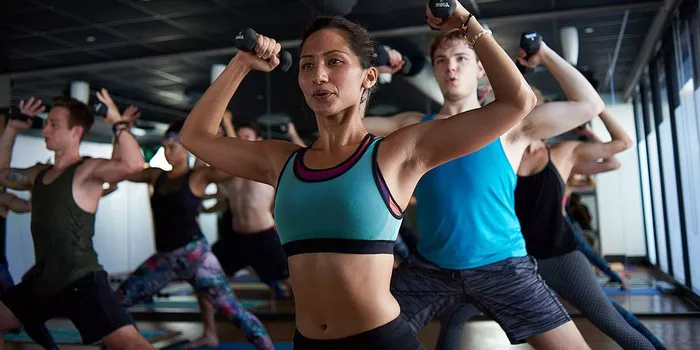Yoga, an ancient practice originating from India, has gained immense popularity worldwide for its numerous physical and mental benefits. One fundamental aspect of practicing yoga is holding various poses or asanas. While the benefits of yoga are widely acknowledged, determining the optimal duration for holding each pose remains a subject of debate among practitioners. In this article, we will delve into the factors influencing the duration of holding yoga poses and provide precise answers to the question: How long should a yoga pose be held?
Understanding the Dynamics of Holding Yoga Poses
Before delving into the specifics of duration, it’s crucial to understand the dynamics of holding yoga poses. Yoga poses, or asanas, are designed to stretch, strengthen, and balance the body, as well as calm the mind. Each pose targets specific muscle groups, joints, and energy channels (nadis) within the body. The duration for which a pose is held directly impacts its effectiveness in achieving these objectives.
Factors Influencing Duration
Several factors influence the duration for which a yoga pose should be held. These factors may vary from individual to individual and depend on various physical, mental, and environmental aspects. Let’s explore some of the key factors:
1. Experience Level: A practitioner’s experience level plays a crucial role in determining the duration of holding yoga poses. Beginners may need to hold poses for shorter durations to build strength, flexibility, and familiarity with the asana. Advanced practitioners, on the other hand, may hold poses for longer periods to deepen their practice and explore subtle nuances.
2. Physical Condition: The physical condition of an individual, including their flexibility, strength, and overall health, influences how long they can comfortably hold a yoga pose. Those with pre-existing medical conditions or injuries may need to modify poses and adjust the duration accordingly to prevent strain or exacerbating their condition.
3. Intent of Practice: The intent behind practicing yoga also dictates the duration of holding poses. For example, in a dynamic flow or vinyasa practice, poses are typically held for shorter durations to maintain the flow of movement and build heat in the body. In contrast, in a restorative or yin yoga practice, poses are held for longer periods to promote relaxation, release tension, and access deeper layers of connective tissue.
4. Breath Awareness: Conscious breathing, or pranayama, is integral to yoga practice. The rhythm and depth of breath influence the duration for which a pose can be held comfortably. Practitioners are often encouraged to synchronize their breath with movement and hold poses for as long as they can maintain a steady and relaxed breath.
5. Alignment and Stability: Proper alignment and stability are essential for safely holding yoga poses. It’s crucial to ensure that the body is aligned correctly and supported by engaging the necessary muscle groups. Holding a pose beyond one’s capacity or with poor alignment can lead to injury or strain.
6. Environmental Factors: Environmental factors such as temperature, humidity, and the surface on which the practice is conducted can impact the duration of holding yoga poses. Warmer temperatures may allow for deeper stretches, while colder temperatures may require shorter durations to prevent stiffness or discomfort.
Recommended Duration for Holding Yoga Poses
While there is no one-size-fits-all answer to how long a yoga pose should be held, certain guidelines can help practitioners determine an appropriate duration based on their individual circumstances:
1. Beginner Level: For beginners, it is advisable to start with holding yoga poses for 15-30 seconds. This duration allows beginners to gradually build strength, flexibility, and familiarity with the poses without overexertion.
2. Intermediate Level: Intermediate practitioners can aim to hold poses for 30-60 seconds. This duration enables practitioners to deepen their practice, refine alignment, and explore variations or modifications of poses.
3. Advanced Level: Advanced practitioners may hold poses for 60 seconds or more, depending on their comfort level, intent of practice, and specific goals. Holding poses for longer durations allows advanced practitioners to access deeper layers of the body, cultivate patience, and explore the meditative aspects of yoga.
4. Restorative Practices: In restorative or yin yoga practices, poses are typically held for 3-5 minutes or even longer. This extended duration promotes relaxation, stimulates the parasympathetic nervous system, and facilitates the release of tension from the body and mind.
5. Breath-Centered Approach: Regardless of experience level, practitioners are encouraged to prioritize breath awareness and listen to their body’s signals while holding yoga poses. If breath becomes strained or uneven, it may indicate that the pose is being held for too long or with excessive effort.
6. Individual Variation: It’s essential for practitioners to honor their body’s limitations and adjust the duration of holding poses accordingly. What works for one person may not be suitable for another, so it’s crucial to cultivate self-awareness and practice with mindfulness and compassion.
Conclusion
Determining the optimal duration for holding yoga poses is a nuanced process that depends on various factors, including experience level, physical condition, intent of practice, breath awareness, alignment, and environmental factors. By considering these factors and listening to their body’s cues, practitioners can personalize their practice and derive maximum benefit from each yoga pose. Whether holding a pose for a few seconds or several minutes, the key is to approach the practice with mindfulness, patience, and a deep sense of presence.
















